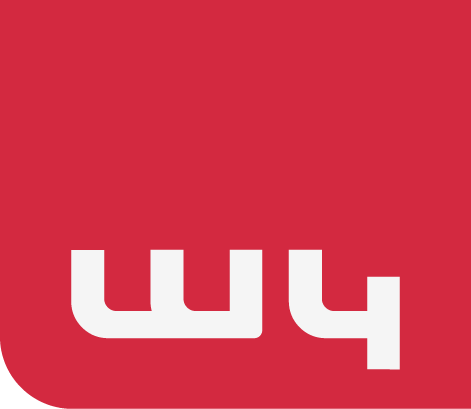Data is the lifeblood of modern businesses, but without orchestration, it remains siloed, chaotic, and underutilized. That's why it's crucial to manage and use your data effectively. In this article, we'll explore what data orchestration is, why it's especially relevant to today's business leaders, how it can serve as a strategic lever, and how it helps your company drive data-centric innovation.
What is data orchestration and Why is it Relevant for Managers?
Data orchestration is an automated process that connects, processes, and manages data across different systems. Think of it as a central hub that coordinates data flow and makes sure the right information is in the right place at the right time. Unlike basic data integration—which just links data systems—data orchestration goes a step further. It automates complex data workflows to turn raw data into actionable information.
Going beyond being a technical project for the IT department, data orchestration is a strategic priority for business leaders who want their companies to thrive in a data-driven world. Here are some of the key benefits:
- More informed decisions with unified data: Combining data from different sources gives you a comprehensive view of your business, enabling better decision-making.
- Improved operational efficiency: Automating data workflows cuts down on manual tasks, minimizes errors, and helps you make better use of your resources.
- Stronger data governance and compliance: Centralizing control of your data makes it easier to enforce data policies and comply with regulations like GDPR or HIPAA.
The Business Value of Data Orchestration

Data orchestration is a pivotal factor in achieving sustained business success, empowering organizations to fully capitalize on their valuable data assets. Its impact extends across multiple strategic dimensions:
Breaking Down Data Silos and Enhancing Collaboration
Effective data orchestration streamlines the integration and flow of information between diverse departments and systems, eliminating traditional barriers. For instance, marketing teams can seamlessly integrate customer information from CRM systems, e-commerce platforms, social media channels, and customer surveys. This integration produces comprehensive customer profiles, enabling highly targeted marketing campaigns, enhanced departmental collaboration, informed decision-making, and improved customer experiences.
Improving Decision-Making Through Real-Time Insights
Orchestrated data provides immediate access to accurate, real-time analytics, significantly enhancing decision-making capabilities across the organization. A finance team, for example, can leverage real-time data for precise cash flow forecasting and proactive risk management. Similarly, sales teams can utilize instantaneous insights into customer behavior to swiftly identify sales opportunities and dynamically adjust their strategies. This results in quicker response times, proactive planning, and improved business outcomes.
Operational Efficiency and Cost Savings Through Automation
Automating routine data processes and workflows through orchestration significantly reduces manual tasks, minimizes errors, and optimizes resource allocation. Automation expedites reporting, data analysis, order processing, and invoicing, allowing employees to redirect their efforts toward strategic, value-adding activities. The outcomes include heightened productivity, shorter turnaround times, decreased operational expenses, and increased employee satisfaction.
Compliance and Security Through Centralized Data Control
Centralized data orchestration reinforces compliance and security across the organization. By implementing robust access controls, encryption measures, and detailed audit trails, companies ensure adherence to regulatory requirements such as GDPR and HIPAA. Centralization enables meticulous monitoring and control, ensuring sensitive data remains secure, preventing unauthorized access, and promptly identifying suspicious activities. Consequently, organizations can achieve regulatory compliance, safeguard sensitive information, mitigate data breach risks, and cultivate trust among customers and business partners.
Core Components of a Data Orchestration Strategy

A successful data orchestration strategy encompasses several critical components:
1. Data Ingestion
Effective data ingestion involves collecting data from diverse internal sources like CRM, ERP, and databases, as well as external sources including social media, IoT devices, and third-party APIs. It supports real-time data capture for urgent applications, batch processing for large data volumes, and continuous data streaming. To ensure reliability, mechanisms for data quality control and validation must be integrated during the data collection phase.
2. Data Transformation and Processing
This component utilizes ETL (Extract, Transform, Load) and ELT (Extract, Load, Transform) processes for thorough data cleansing, enrichment, and structuring. Data cleansing corrects inaccuracies, duplicates, and gaps, while enrichment adds value by combining data with external information. Data structuring ensures uniformity for efficient analysis, and data masking or anonymization techniques are employed to protect sensitive information.
3. Data Integration
Robust integration involves hybrid and multi-cloud strategies to unify data from diverse cloud and on-premises systems. API integration connects data sources seamlessly, and data virtualization provides unified access without physically replicating data. Master Data Management (MDM) ensures consistency and a single, accurate view of critical organizational data across all departments.
4. Automation and Workflow Management
Orchestration tools automate data pipelines and workflows, reducing complexity and manual intervention. Event-driven automation triggers workflows based on specific occurrences or conditions, while workflow modeling visually designs efficient data pathways. Comprehensive error handling and recovery strategies are implemented to maintain uninterrupted data flows.
5. Monitoring and Governance
Continuous monitoring maintains high data quality standards, ensuring data remains accurate and reliable. Advanced security measures protect against unauthorized access, loss, or misuse, with rigorous adherence to data protection regulations and compliance standards. Effective tracking of data origin and processing history, alongside detailed metadata management, preserves data context and enhances accountability and transparency throughout the organization.
Data Orchestration as Part of a Data Fabric Strategy
.jpeg?width=1000&height=560&name=AdobeStock_765224349%20(1).jpeg)
While data orchestration excels at dynamically managing data flows within organizations, modern enterprises often require a broader, integrated data management approach to handle the increasing complexity of their data environments.
A data fabric provides an end-to-end data management architecture designed to unify access, integration, and analysis of data across multiple environments—such as cloud, on-premises, hybrid, and multi-cloud—in an intelligent and cohesive manner. Leveraging advanced technologies such as artificial intelligence (AI), metadata management, and automation, a data fabric ensures the timely availability and intelligent utilization of data regardless of its location.
It is within this architecture that data orchestration acts as a mechanism that actively moves, transforms, and manages data efficiently, ensuring seamless data integration and maximizing the effectiveness of the overall data fabric framework.
Practical Applications of Data Orchestration
Retail: Personalized Customer Experiences
Global retailers use data orchestration to unify online and offline sales data to create highly personalized customer experiences. By consolidating information from online purchases, in-store transactions, website interactions, loyalty programs, social media engagement, and customer feedback, retailers can develop comprehensive customer profiles.
This holistic understanding allows for tailored offers, recommendations, and personalized content, enhancing customer satisfaction and loyalty. Predictive analytics powered by orchestrated data also enables proactive identification of customer needs, helping to reduce churn and improve retention rates.
Healthcare: Enhanced Patient Care through Unified Medical Records
In healthcare, data orchestration significantly enhances patient care by integrating diverse medical data from electronic health records, laboratory results, imaging studies, pharmacy records, wearables, and medical devices. Real-time synchronization of patient information empowers healthcare providers to make informed decisions, deliver personalized treatments, and respond swiftly to patient health changes.
Additionally, orchestrated data improves interdisciplinary collaboration among healthcare professionals, ensuring seamless and comprehensive care. By analyzing large datasets, healthcare providers can uncover valuable insights and trends, leading to improved treatment outcomes and innovative medical advancements.
Steps to Implement Data Orchestration in Your Organization
Assess Your Current Data Landscape
Begin by thoroughly assessing your existing data environment. Create an inventory of all internal and external data sources, including databases, APIs, cloud storage, on-premises servers, and third-party applications. Analyze current data flows to identify bottlenecks, redundancies, manual processes, and isolated data silos. Additionally, evaluate the quality of your data in terms of accuracy, completeness, consistency, and timeliness, and conduct vulnerability assessments to uncover areas susceptible to data loss, corruption, or unauthorized access.
Define Clear Business Goals
Clearly articulate your business objectives for data orchestration. Establish measurable goals, such as improved decision-making capabilities, enhanced customer experiences, faster time-to-market, or reduced operational costs. Define specific key performance indicators (KPIs) to effectively monitor progress. Engage stakeholders from various departments—including IT, business units, and senior management—to ensure comprehensive alignment and support for your orchestration initiatives.
Select the Right Technology Stack
Identify and document critical requirements for your technology infrastructure, considering factors like scalability, flexibility, ease of use, and compatibility with existing systems. Evaluate orchestration tools through detailed comparisons, assessing both commercial and open-source options. Implement proof-of-concept (PoC) projects to validate tool performance and compatibility within your unique organizational context before making final selections.
Implement and Automate Workflows
Design efficient workflows that automate key data processes, including data extraction, transformation, enrichment, and analysis. Establish robust data pipelines to facilitate seamless data movement from diverse sources into target systems. Schedule automated tasks to run at predetermined intervals or in response to specific triggers. Develop comprehensive error-handling mechanisms to ensure continuity of workflows, even in the event of disruptions or failures.
Ensure Governance and Security
Implement stringent governance measures to maintain data integrity and security. Utilize role-based access controls (RBAC) to restrict data access to authorized personnel only. Enhance data security by applying encryption and anonymization practices, particularly for sensitive and personal data. Ensure compliance with relevant legal frameworks and industry standards by embedding compliance considerations into your orchestration processes. Maintain comprehensive data lineage documentation to promote transparency and accountability.
Monitor and Optimize Continuously
Establish robust monitoring systems to proactively track workflow performance and swiftly detect issues. Implement detailed logging of all activities within data workflows to ensure complete traceability and facilitate audits. Set up automated notification mechanisms for critical events, including workflow errors or system downtime. Regularly analyze workflow performance data to identify areas for optimization, thereby continuously refining your orchestration processes to enhance efficiency, reliability, and business impact.
Final Thoughts
For companies investing in modern data management, data orchestration is more than just another technology—it's an essential cornerstone of a comprehensive data strategy. Integrating orchestration within a broader data fabric framework enables businesses to achieve unprecedented agility, obtain real-time insights, and realize substantial operational efficiencies at scale.
Ready to leverage the full potential of your data?
Contact us for a personalized consultation and discover how data orchestration can help you secure a competitive advantage and transform your business.








